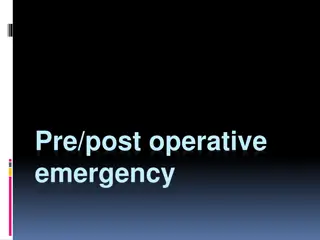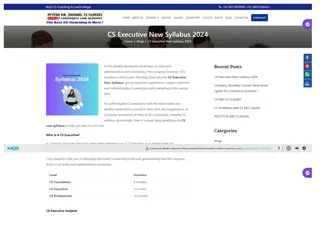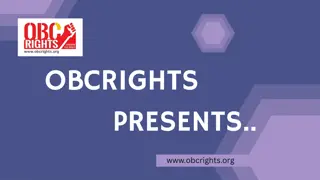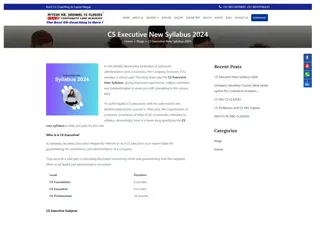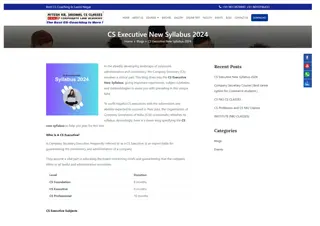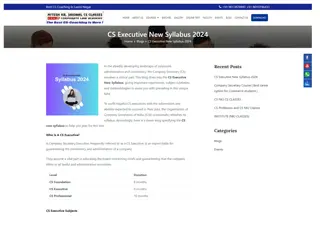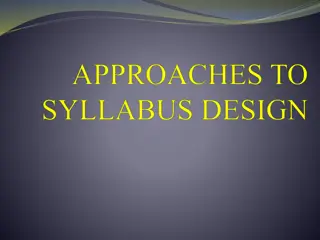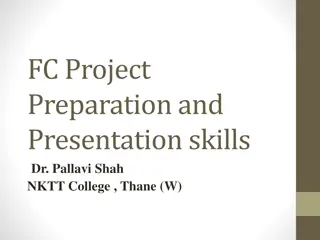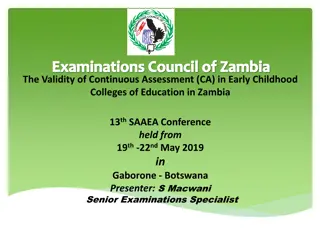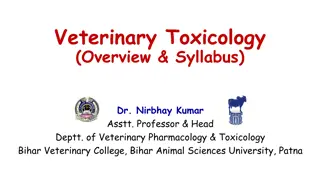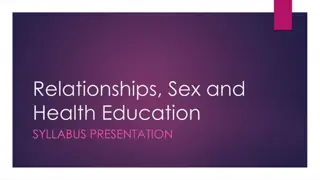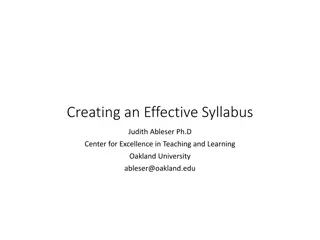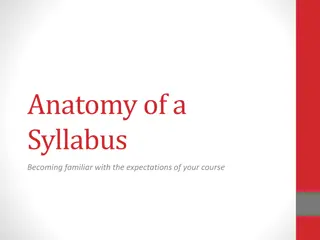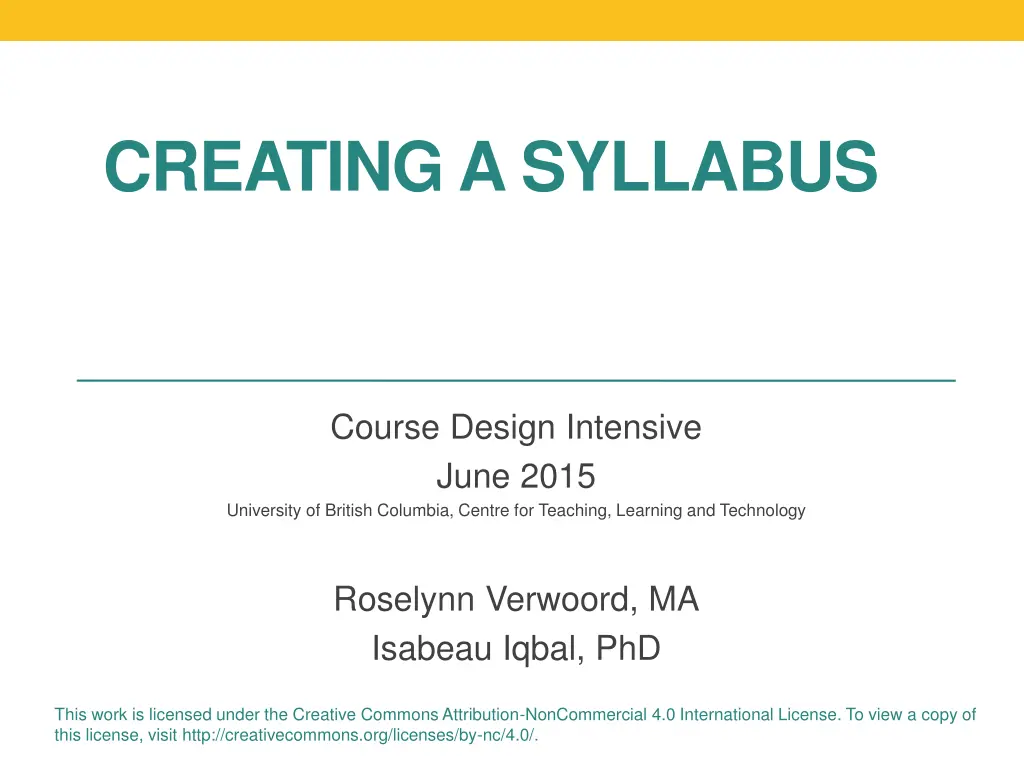
Creating a Learning-Centered Syllabus
Learn how to design an effective learning-centered syllabus for your course, focusing on student needs, academic success, and course structure. Enhance your syllabus creation skills based on principles of integration and alignment to engage and support students effectively.
Download Presentation

Please find below an Image/Link to download the presentation.
The content on the website is provided AS IS for your information and personal use only. It may not be sold, licensed, or shared on other websites without obtaining consent from the author. If you encounter any issues during the download, it is possible that the publisher has removed the file from their server.
You are allowed to download the files provided on this website for personal or commercial use, subject to the condition that they are used lawfully. All files are the property of their respective owners.
The content on the website is provided AS IS for your information and personal use only. It may not be sold, licensed, or shared on other websites without obtaining consent from the author.
E N D
Presentation Transcript
CREATING A SYLLABUS Course Design Intensive June 2015 University of British Columbia, Centre for Teaching, Learning and Technology Roselynn Verwoord, MA Isabeau Iqbal, PhD This work is licensed under the Creative Commons Attribution-NonCommercial 4.0 International License. To view a copy of this license, visit http://creativecommons.org/licenses/by-nc/4.0/.
2 June 5, 2015 Learning objectives: By the end of this session, you should be able to: 1. Critically appraise whether a syllabus is learning- centered. 2. Explain the principles of integration and alignment as these relate to syllabus creation. 3. Draft and/or revise an effective learning-centred syllabus for your course.
3 June 5, 2015 The learning-centered syllabus Focuses on the needs of the students as these relate to their learning process. Instructors include information that will facilitate the academic success of students Views learning as a partnership between instructor(s) and students
4 June 5, 2015 The learning-centered syllabus Reference: Fink, D. (2013)
5 June 5, 2015 Benefits of the learning-centered syllabus: Establishes connection with students Acquaints students with structure of course Sets the tone Includes assignment descriptions Source: Designing a course syllabus: a learning-centered approach. Retrieved from: http://ctl.byu.edu/sites/default/files/designing-a-course-syllabus_0.pdf
6 June 5, 2015 Benefits of the learning-centered syllabus: Defines students responsibilities for success Helps students determine their readiness for the course States how course fits into the overall program Communicates technology requirements Source: Designing a course syllabus: a learning-centered approach. Retrieved from: http://ctl.byu.edu/sites/default/files/designing-a-course-syllabus_0.pdf
7 June 5, 2015 Activity: Appraise a syllabus (on your own) Using your own syllabus or one of the syllabi CDI site, critically appraise the extent to which the document is learning centered. (10 minutes) You may wish to use the list of elements at in the Syllabus Best Practices (Iowa State University) (on website, see Resources, Friday afternoon, Syllabus Resources )
8 June 5, 2015 Activity: Appraise a syllabus Some things to consider . What is the tone of this syllabus? (What first impressions would this syllabus give to students?) In your opinion, does the syllabus view learning as a partnership between students and their instructor? Why or why not? What does the syllabus communicate about the instructor s role? about the students responsibilities? To what extent does the syllabus anticipate students questions?
10 June 5, 2015 Alignment Alignment Assessment tasks aligned to what we intend students to learn E.g. Criterion-referenced assessment Intended outcomes specify the ACTIVITY that students should engage in if they are to achieve the outcome, as well as the content the activity refers to. Teacher creates learning environment; student performs learning activities; teacher assesses student performance in relation to the learning outcomes. E.g. If the LO is - Students will be able to drive a car, the teaching focuses on helping students to drive a car, not just giving lectures on car driving, while the assessment focuses on how well the car is driven.
11 June 5, 2015 Alignment/Integration The curriculum is designed so that the learning activities and assessment tasks are aligned with the learning objectives that are intended in the course.
12 June 6, 2015 Intended learning objectives Teaching and learning activities Assessment methods Designed to meet learning objectives Designed to assess learning objectives
13 June 5, 2015 Application of Integration & Alignment (video/activity)
14 June 5, 2015 Activity: Your turn! Draft/revise an effective learning-centered syllabus for your course. Image credit: Scott Maxwell. https://www.flickr.com/photos/lumaxart/2137735924
15 June 5, 2015 Your turn: Working on your syllabus Consult the UBC Syllabus Template and Example for ideas on what else you need to include: http://senate.ubc.ca/sites/senate.ubc.ca/files/downloads/va_H_Syll abus_Template_Example.pdf Consult the Course Syllabus Checklist to see what information you may still need. (See pages 1-3: https://www.uoguelph.ca/tss/resources/idres/CourseOutlinechecklist1. pdf) What are your next steps for syllabus creation? What can you make progress on now? Start!
16 June 5, 2015 Syllabus session - Closing What questions emerged for you related to designing a course syllabus, while you were working on your course? What needs clarification?

